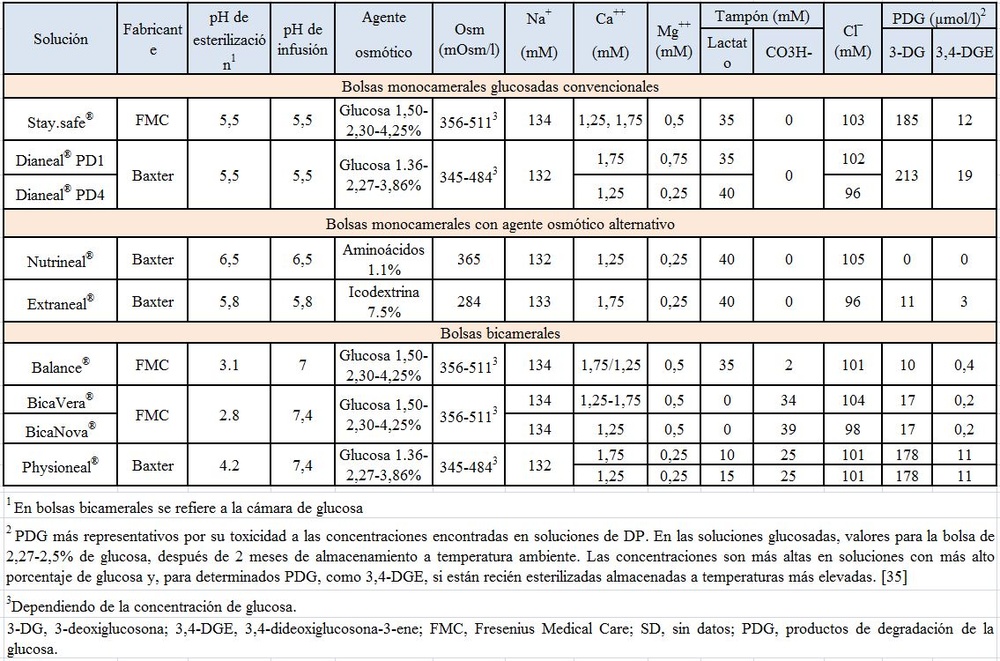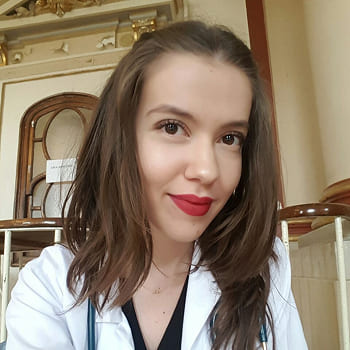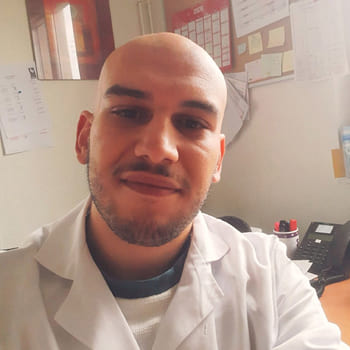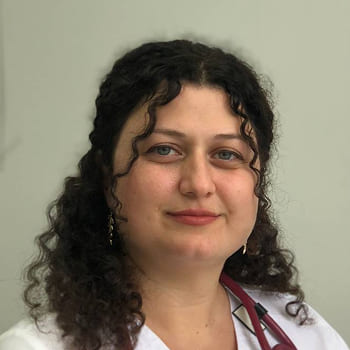

BALANCE 2,3% GLUCOSE, 1,75 mmol/L CÁLCIO, SOLUÇÃO PARA DIÁLISE PERITONEAL

Pergunte a um médico sobre a prescrição de BALANCE 2,3% GLUCOSE, 1,75 mmol/L CÁLCIO, SOLUÇÃO PARA DIÁLISE PERITONEAL

Como usar BALANCE 2,3% GLUCOSE, 1,75 mmol/L CÁLCIO, SOLUÇÃO PARA DIÁLISE PERITONEAL
Introdução
Prospecto: Informação para o utilizador
balance2,3% glicose, 1,75 mmol/l de cálcio, solução para diálise peritoneal
Leia todo o prospecto atentamente antes de começar a usar este medicamento, porque contém informações importantes para si.
- Conserva este prospecto, porque pode ter que voltar a lê-lo.
- Se tiver alguma dúvida, consulte o seu médico, farmacêutico ou enfermeiro.
- Este medicamento foi prescrito apenas para si e não deve dá-lo a outras pessoas, mesmo que tenham os mesmos sintomas que si, porque pode prejudicá-las.
- Se experimentar efeitos adversos, consulte o seu médico, farmacêutico ou enfermeiro, mesmo que se trate de efeitos adversos que não aparecem neste prospecto. Ver seção 4.
Conteúdo do prospecto:
- O que é balancee para que é utilizado
- O que precisa saber antes de começar a usar balance
- Como usar balance
- Efeitos adversos possíveis
- Conservação de balance
- Conteúdo do envase e informação adicional
1. O que é balance e para que é utilizado
balanceé utilizado para limpar o sanguevia peritoneu em pacientes com Insuficiência renal crónica em fase terminal. Este tipo de limpeza do sangue é conhecido como diálise peritoneal.
2. O que precisa saber antes de começar a usar balance
Não usebalance2,3% glicose, 1,75 mmol/l de cálcio
- se o seu nível de potássio no sangue for muito baixo
- se o seu nível de cálcio no sangue for muito alto
- se sofrer de um distúrbio do metabolismo conhecido como acidose láctica
A diálise peritoneal não deve ser iniciada se sofrer:
- alterações na região abdominalcomo
- feridas, ou após uma operação cirúrgica
- queimaduras
- reações inflamatórias extensas da pele
- inflamação do peritoneu
- feridas supurantes não cicatrizadas
- hérnias umbilicais, inguinais ou diafragmáticas
- tumores no abdômen ou intestino
- doenças de inflamação do intestino
- obstrução do funcionamento intestinal
- doença pulmonar, especialmente pneumonia
- infecção generalizada do sangue causada por bactérias
- níveis muito elevados de gordura no sangue
- acumulação no sangue de toxinas procedentes da urina cuja eliminação não pode ser realizada mediante limpeza do sangue
- desnutrição grave e perda de peso, especialmente se não for possível uma nutrição com o aporte adequado de proteínas.
Advertências e precauções
Informar o seu médico imediatamente:
- em caso de perda severa de eletrólitos (sales)causada por vómitos e/ou diarreias.
- em caso de rins anormais(rins poliquísticos)
- em caso de ter inflamação do peritoneu, reconhecível porque a solução de diálise peritoneal que sai do seu peritoneu é turva e/ou dor abdominal. Mostre ao seu médico a bolsa que contém a solução de drenagem.
- em caso de dor abdominal grave, distensão abdominal ou vómitos. Isso pode ser um sinal de esclerose peritoneal encapsulante, uma complicação derivada do tratamento de diálise peritoneal que pode chegar a provocar a morte.
A diálise peritoneal pode ocasionar uma perda de proteínase vitaminas solúveis em água.
Recomenda-se seguir uma dieta adequada ou tomar suplementos alimentares com o fim de evitar estados nutricionais carenciais.
O seu médico deverá comprovar o equilíbrio de eletrólitos (sales), a função renal, o peso corporal e o estado nutricional.
Devido à alta concentração de glicose em balance 2,3% glicose, 1,75 mmol/l de cálcio deve ser utilizado com precaução e sob a supervisão do seu médico.
Uso debalancecom outros medicamentos
Informar o seu médico ou farmacêutico se está utilizando, utilizou recentemente ou pudesse ter que utilizar qualquer outro medicamento.
A diálise peritoneal pode alterar o efeito de alguns medicamentos, por lo que pode ser necessário que o seu médico mude a dosagem para algum deles, especialmente os seguintes:
- medicamentos para insuficiência cardíaca, como a digoxina.
O seu médico comprovará o nível de potássio no sangue e, se necessário, tomará as medidas oportunas.
- medicamentos que influem nos níveis de cálciocomo aqueles que contêm cálcio ou vitamina D.
- medicamentos que aumentam a excreção de urina,tais como os diuréticos.
- medicamentosadministrados por via oral e que diminuem os níveis de açúcar no sangueou de insulina.Deve controlar o nível de açúcar no sangue regularmente. Os pacientes diabéticos podem necessitar de um ajuste da dosagem diária de insulina.
Gravidez e lactação
Se está grávida ou em período de lactação, acredita que possa estar grávida ou tem intenção de engravidar, consulte o seu médico antes de utilizar este medicamento. Não há dados adequados relativos ao uso de balanceem mulheres grávidas ou durante o período de lactação. Se você está grávida ou em período de lactação deve utilizar balancesó se o seu médico o considerar absolutamente necessário.
Condução e uso de máquinas
A influência de balancesobre a capacidade para conduzir ou utilizar máquinas é nula ou insignificante.
3. Como usar balance
Siga exatamente as instruções de administração deste medicamento indicadas pelo seu médico. Em caso de dúvida, consulte novamente o seu médico ou farmacêutico.
O seu médico determinará o método, a duração e a frequência de uso, assim como o volume requerido de solução e o tempo de permanência na cavidade peritoneal.
Se tiver tensão na região do abdômen, o seu médico pode reduzir o volume.
Diálise peritoneal contínua ambulatorial (CAPD)
- Adultos:A dosagem habitual é entre 2000 – 3000 ml de solução quatro vezes ao dia dependendo do peso corporal e da função renal.
A solução é drenada após um tempo de permanência de entre 2 e 10 horas.
- Crianças:O médico determinará o volume de solução de diálise requerido dependendo da tolerância, da idade e da área de superfície corporal da criança.
A dosagem inicial recomendada é de 600 – 800 ml/m2 de área de superfície corporal quatro vezes ao dia (até 1000 ml/m2 à noite).
Diálise peritoneal automatizada (APD)
Para isso utiliza-se o sistema sleep•safeou Safe•Lock. O intercâmbio das bolsas é controlado automaticamente pelo ciclador durante a noite.
- Adultos:A prescrição normal é de 2000 ml (máximo 3000 ml) por intercâmbio com 3-10 intercâmbios durante a noite e o tempo do ciclador de 8 a 10 horas, e um ou dois intercâmbios durante o dia.
- Crianças:O volume por intercâmbio deve ser 800-1000 ml/m2 (até 1400 ml/m2) de área de superfície corporal com 5-10 intercâmbios durante a noite.
Usar balancesó na cavidade peritoneal.
Use apenas balancese a solução for transparente e o envase não estiver danificado.
balanceestá disponível em uma bolsa de dupla câmara. Antes de utilizar a solução nas duas câmaras, misturar as soluções segundo se descreve a seguir.
Instruções de uso:
Sistema stay•safepara diálise peritoneal contínua ambulatorial (CAPD)
Em primeiro lugar, aqueça a bolsa com a solução à temperatura corporal. Isso deve ser realizado utilizando um aquecedor de bolsa apropriado. Uma bolsa de 2000 ml a uma temperatura inicial de 22ºC necessitará uns 120 min de tempo de aquecimento. Pode obter uma informação mais detalhada no manual de instruções do seu aquecedor. Para aquecer a solução não devem ser utilizados fornos de micro-ondas devido ao risco de superaquecimento local. O intercâmbio das bolsas pode ser realizado após aquecer a solução.
- Preparação da solução
Verifique a bolsa com a solução aquecida (etiqueta, data de validade, transparência da solução, integridade da bolsa e sobrebolsa, integridade da soldadura). Coloque a bolsa em uma superfície sólida. Abra a sobrebolsa da bolsa e o precinto do tampão de desinfecção. Lave as mãos utilizando uma solução de lavado antimicrobiana. Enrole a bolsa, que está colocada horizontalmente sobre a sobrebolsa, desde um dos bordos laterais até que se abra a soldadura intermédia. As soluções das duas câmaras se misturam automaticamente. Agora enrole a bolsa desde o bordo superior até que a soldadura do triângulo inferior se abra completamente. Verifique que todas as soldaduras estão completamente abertas. Verifique que a solução é transparente e que a bolsa não tem fugas.
- Preparação do intercâmbio da bolsa
Coloque a bolsa com a solução no suporte de perfusão superior, desenrole os tubos da bolsa com a solução e coloque o conector DISC no organizador. Depois de desenrolar os tubos da bolsa de drenagem, coloque-a no suporte de perfusão inferior. Coloque o conector de catéter em uma das duas conexões do organizador. Coloque o novo tampão de desinfecção na conexão que fica livre. Desinfete as mãos e retire o tampão protetor do conector DISC. Conecte o conector do catéter ao conector DISC.
- Fluxo de saída
Abra a válvula de extensão. Inicia-se o fluxo de saída.
Posição ?
- Purga
Uma vez completado o fluxo de saída, purgue a bolsa de drenagem com líquido novo (aproximadamente 5 segundos).
Posição ??
- Fluxo de entrada
Inicie o fluxo de entrada girando o comutador rotatório para a
Posição ???
- Paso de segurança
Feche a extensão do catéter introduzindo o PIN no conector do catéter.
Posição ????
- Desconexão
Retire o tampão de proteção do novo tampão de desinfecção e enrosque-o no velho. Desenrosque o conector do catéter do conector DISC e enrosque-o no tampão de desinfecção novo.
- Cierre do conector DISC
Feche o conector DISC com o extremo aberto do tampão de desinfecção utilizado, que se coloca no buraco direito do organizador.
- Verifique a transparência e o peso do dializado drenado e, se o efluente for transparente, jogue-o fora.
Sistemasleep•safepara diálise peritoneal automatizada (APD)
Durante a diálise peritoneal automatizada (APD) o ciclador aquece a solução automaticamente.
sistemasleep•safede 3000 ml
- Preparação da solução:ver sistema stay•safe
- Desenrole o tubo da bolsa
- Retire o tampão de proteção
- Coloque o conector no porto livre da bandeja sleep•safe
- A bolsa está pronta para utilizar com o equipamento sleep•safe
sistemasleep•safede 5000 e 6000 ml
- Preparação da solução
Verifique a bolsa com a solução (etiqueta, data de validade, transparência da solução, integridade da bolsa e sobrebolsa, integridade da soldadura). Coloque a bolsa em uma superfície sólida. Abra a sobrebolsa da bolsa. Lave as mãos utilizando uma solução de lavado antimicrobiana. Desdobre a soldadura intermédia e o conector da bolsa. Enrole a bolsa, que está colocada horizontalmente sobre a sobrebolsa, desde o extremo diagonal até o conector da bolsa. A soldadura intermédia se abrirá. Continue até que a soldadura da câmara pequena também se abra. Verifique que todas as soldaduras estão completamente abertas. Verifique que a solução é transparente e que a bolsa não tem fugas.
- – 5.: ver o sistema sleep•safe de 3000 ml.
SistemaSafe•Lockpara diálise peritoneal automatizada (APD)
Durante a diálise peritoneal automatizada (APD) o ciclador aquece a solução automaticamente.
- Preparação da solução: ver o sistema sleep•safe de 5000 e 6000 ml
- Retire o tampão protetor do conector da linha de conexão.
- Conecte as linhas à bolsa.
- Quebre o tope interno dobrando a linha e o PIN mais de 90º a ambos os lados.
- A bolsa está pronta para uso.
As bolsas são de uso único e qualquer resto de solução não utilizada deve ser jogado fora.
Depois da formação apropriada, balancepode ser utilizado de forma independente em casa. Certifique-se de seguir todos os passos que aprendeu durante a formação e de manter as condições higiênicas adequadas quando intercambiar as bolsas.
Verifique sempre a turbidez do drenado dializado. Ver seção 2.
Se usar maisbalancedo que deve
Se perfundir um excesso de solução de diálise na cavidade peritoneal, esta pode ser drenada. Em caso de utilizar demasiadas bolsas, contacte o seu médico, porque pode causar desequilíbrio de eletrólitos e/ou de líquidos.
Em caso de sobredosagem ou ingestão acidental, consulte o seu médico ou farmacêutico ou ligue para o Serviço de Informação Toxicológica, telefone 91 562 04 20, indicando o medicamento e a quantidade ingerida.
Se esquecer de usarbalance
Tente alcançar o volume total prescrito para cada período de 24 horas para evitar consequências que possam pôr em perigo a sua vida. Deve consultar o seu médico se tiver dúvidas.
Se tiver alguma outra dúvida sobre o uso deste medicamento, pergunte ao seu médico, farmacêutico ou enfermeiro.
4. Efeitos adversos possíveis
Assim como todos os medicamentos, este medicamento pode produzir efeitos adversos, embora nem todas as pessoas os sofram.
Pode apresentar os seguintes efeitos adversos como resultado do tratamento de diálise peritoneal em geral:
muito frequentes (podem afetar mais de 1 de cada 10 pessoas)
- inflamação do peritoneu, que se advinha por uma solução de dializado drenado que sai do seu peritoneu turva, dor abdominal, febre, mal-estar ou, em muito raras ocasiões, infecção do sangue.
Mostre ao seu médico a bolsa que contém a solução de drenagem.
- inflamação da pele no local de saída do catéter ou ao longo da longitude do catéter, reconhecível por vermelhidão, inchaço, dor, exsudação ou crostas.
- hérnia na parede abdominal
Contate imediatamente o seu médico se sofrer algum desses efeitos adversos.
Outros efeitos adversos do tratamento são os seguintes:
frequentes (podem afetar até 1 de cada 10 pessoas)
- problemas com a entrada ou saída do dializado
- sensação de estiramento ou plenitude do abdômen
- dor de ombros
pouco frequentes (podem afetar até 1 de cada 100 pessoas)
- diarreia
- prisão de ventre
muito raros(podem afetar até 1 de cada 10000 pessoas)
- infecção do sangue
não conhecidos(a frequência não pode ser estimada a partir dos dados conhecidos)
- dificuldades respiratórias
- mal-estar
- esclerose peritoneal encapsulante, cujos sintomas poderiam ser dor abdominal, distensão abdominal ou vómitos
Pode apresentar os seguintes efeitos adversos quando utiliza balance:
muito frequentes(podem afetar mais de 1 de cada 10 pessoas)
- deficiência de potássio
frequentes (podem afetar até 1 de cada 10 pessoas)
- excesso de cálcio se o cálcio ingerido for demasiado elevado
- níveis elevados de açúcar no sangue
- níveis elevados de gordura no sangue
- aumento de peso
pouco frequentes (podem afetar até 1 de cada 100 pessoas)
- nível de líquido corporal muito baixo, que pode ser reconhecido por uma rápida perda de peso, diminuição da tensão arterial, pulso rápido.
- nível de líquido corporal muito alto, que pode ser reconhecido por presença de água nos tecidos e pulmões, tensão arterial alta, dificuldades respiratórias.
- tonturas
Comunicação de efeitos adversos
Se experimentar qualquer tipo de efeito adverso, consulte o seu médico, farmacêutico ou enfermeiro, mesmo que se trate de possíveis efeitos adversos que não aparecem neste prospecto. Também pode comunicá-los diretamente através do Sistema Espanhol de Farmacovigilância de medicamentos de Uso Humano: https://www.notificaram.es. Mediante a comunicação de efeitos adversos, você pode contribuir para proporcionar mais informações sobre a segurança deste medicamento.
5. Conservação de balance
Mantenha este medicamento fora da vista e do alcance das crianças.
Não utilize este medicamento após a data de validade que aparece na bolsa e na caixa após CAD. A data de validade é o último dia do mês que se indica.
Não conserve a temperatura inferior a 4ºC.
A solução pronta para uso deve ser utilizada imediatamente, durante as 24 horas posteriores à mistura.
Os medicamentos não devem ser jogados nos deságues nem na lixeira. Pergunte ao seu farmacêutico como se livrar dos envases e dos medicamentos que não precisa. Dessa forma, ajudará a proteger o meio ambiente.
6. Conteúdo do envase e informação adicional
Composição debalance
- Os princípios ativos em um litro de solução pronta para usosão:
Cloruro de cálcio dihidrato 0,2573 g
Cloruro de sódio 5,640 g
Solução de (S)-lactato de sódio 7,85 g
(3,925 g (S)-lactato de sódio)
Cloruro de magnésio hexahidrato 0,1017 g
Glicose monohidrato 25,0 g
(22,73 g glicose anidra)
Estas quantidades de substância ativa são equivalentes a:
1,75 mmol/l cálcio, 134 mmol/l sódio, 0,5 mmol/l magnésio, 101,5 mmol/l cloreto, 35 mmol/l lactato e 126,1 mmol/l glicose.
Os demais componentes são água para preparações injetáveis, ácido clorídrico, hidróxido de sódio e bicarbonato de sódio.
Aspecto do produto e conteúdo do envase
A solução é transparente e incolor.
A osmolaridade teórica da solução pronta para uso é 401 mOsm/l, o pH é aproximadamente 7,0.
balanceestá disponível em bolsas de dupla câmara. Uma câmara contém a solução alcalina de lactato de sódio e a outra câmara contém a solução ácida de glicose com eletrólitos.
balanceestá disponível nos seguintes sistemas de aplicação e tamanhos de envase:
stay•safe: 4 bolsas de 2000 ml 4 bolsas de 2500 ml 4 bolsas de 3000 ml | sleep•safe: 4 bolsas de 3000 ml 2 bolsas de 5000 ml 2 bolsas de 6000 ml | Safe•Lock: 2 bolsas de 5000 ml 2 bolsas de 6000 ml |
Pode ser que apenas alguns tamanhos de envases estejam comercializados.
Título da autorização de comercialização:
Fresenius Medical Care Deutschland GmbH, Else-Kröner-Straße 1, 61352 Bad Homburg v.d.H. Alemanha
Responsável pela fabricação:
Fresenius Medical Care Deutschland GmbH, Frankfurter Straße 6-8, 66606 St. Wendel Alemanha
Representante local:
Fresenius Medical Care España S.A.
C/ Ronda de Poniente, 8, planta baja, Parque Empresarial Euronova,
28760 Tres Cantos (Madrid)
Espanha
Este medicamento está autorizado nos estados membros do Espaço Económico Europeu com os seguintes nomes:
Ver no final deste prospecto multilíngue.
Data da última revisão deste prospecto: 01/2020
A informação detalhada e atualizada deste medicamento está disponível na página Web da Agência Espanhola de Medicamentos e Produtos Sanitários (AEMPS) http://www.aemps.gob.es/.
- País de registo
- Requer receita médicaSim
- Fabricante
- Esta informação é apenas para referência e não constitui aconselhamento médico. Consulte sempre um médico antes de tomar qualquer medicamento. A Oladoctor não se responsabiliza por decisões médicas baseadas neste conteúdo.
- Alternativas a BALANCE 2,3% GLUCOSE, 1,75 mmol/L CÁLCIO, SOLUÇÃO PARA DIÁLISE PERITONEALFabricante: Fresenius Medical Care Deutschland GmbhRequer receita médicaFabricante: Fresenius Medical Care Deutschland GmbhRequer receita médicaFabricante: Fresenius Medical Care Deutschland GmbhRequer receita médica
Alternativas a BALANCE 2,3% GLUCOSE, 1,75 mmol/L CÁLCIO, SOLUÇÃO PARA DIÁLISE PERITONEAL noutros países
As melhores alternativas com o mesmo princípio ativo e efeito terapêutico.
Alternativa a BALANCE 2,3% GLUCOSE, 1,75 mmol/L CÁLCIO, SOLUÇÃO PARA DIÁLISE PERITONEAL em Polska
Alternativa a BALANCE 2,3% GLUCOSE, 1,75 mmol/L CÁLCIO, SOLUÇÃO PARA DIÁLISE PERITONEAL em Ukraina
Médicos online para BALANCE 2,3% GLUCOSE, 1,75 mmol/L CÁLCIO, SOLUÇÃO PARA DIÁLISE PERITONEAL
Avaliação de posologia, efeitos secundários, interações, contraindicações e renovação da receita de BALANCE 2,3% GLUCOSE, 1,75 mmol/L CÁLCIO, SOLUÇÃO PARA DIÁLISE PERITONEAL – sujeita a avaliação médica e regras locais.














